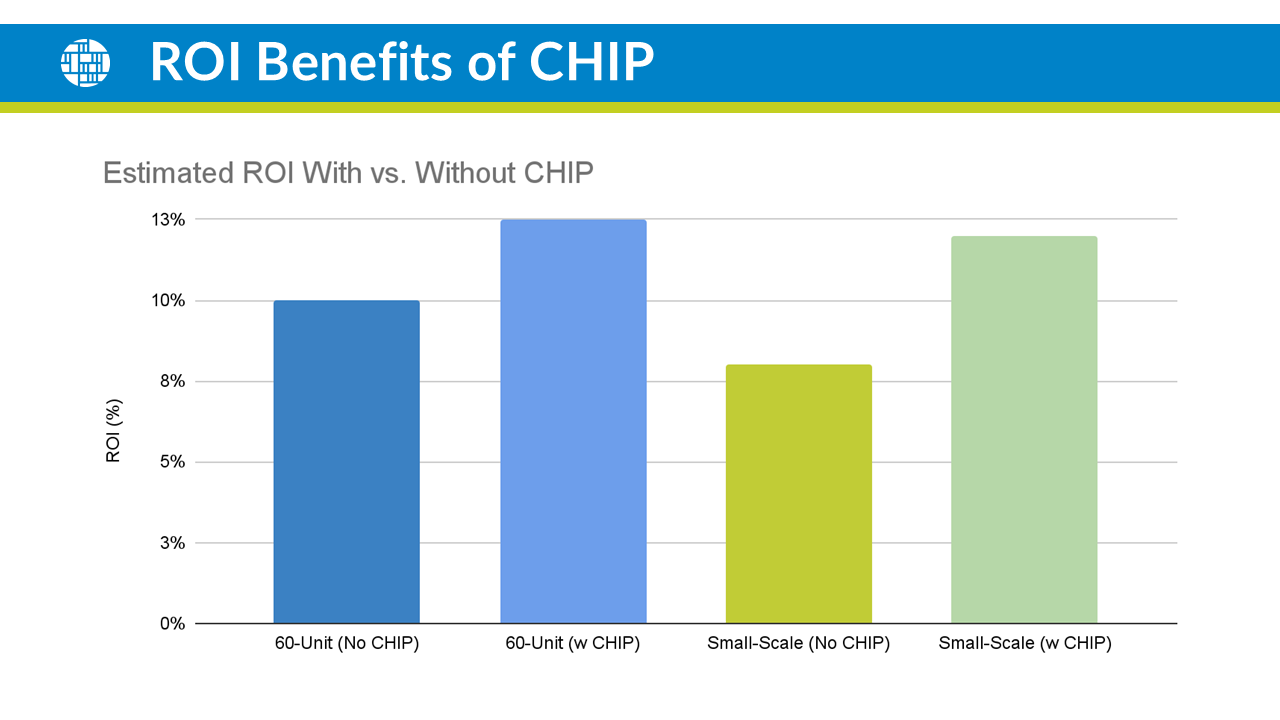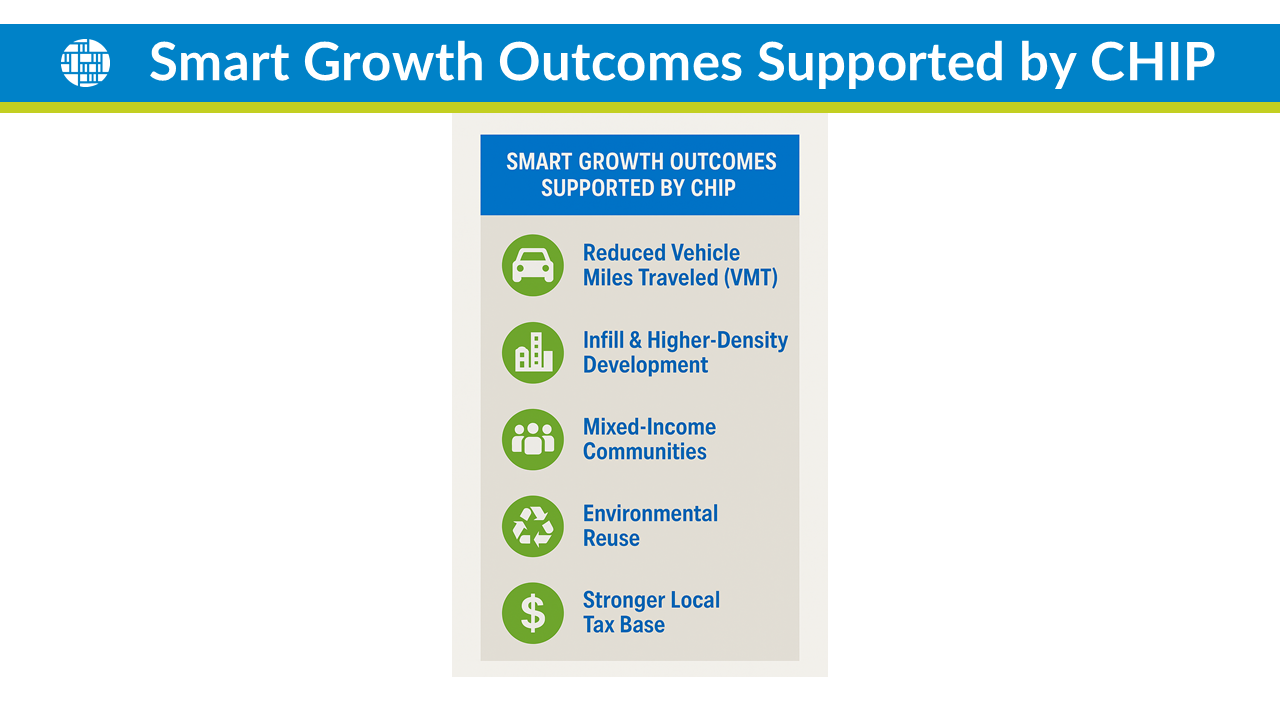AARP Hearing Center

AARP Vermont partnered with Smart Growth America (SGA), through AARP’s Livable Communities Technical Assistance Program (LC-TAP), to study the proposed Community Housing Infrastructure Program (CHIP) and its potential impact on housing development. The LC-TAP program provides the capacity to help AARP State Offices guide policies and projects to support communities to be vibrant and accessible for people of all ages. Addressing housing needs is a vital goal for the Livable Communities Program, including supporting the delivery of homes appropriate for multi-generational living, aging in place, and meeting accessibility needs.
SGA is also working with AARP Vermont through LC-TAP on a forthcoming review of the state’s current approach to Tax Increment Financing (TIF) compared to other states across the US that have successfully leveraged infrastructure funding to enable smart growth and increased housing production. This effort aims to compare key policy elements and requirements to Vermont’s current approach and to support exploration of new approaches to fund infrastructure for housing, such as CHIP.
Vermont Economic Overview for Housing
Vermont faces a confluence of challenges in its housing sector, as a Vermont Agency of Commerce and Community Development (ACCD) report from summer 2024 highlights:
- Vermont will likely need an additional 24,000 to 36,000 homes by 2029.
- Between 2019 and 2023, the purchase price for single-family homes increased by 38%.
- Between 2019 and 2023, the purchase price for mobile homes with land increased by 37%.
Click Here for the Full Analysis of CHIP.


Vermont Tax Increment Financing Comparative Analysis
AARP Vermont partnered with Smart Growth America, through AARP’s Livable Communities Technical Assistance Program, to review the state’s current approach to Tax Increment Financing (TIF) in comparison to other states across the US that have successfully leveraged infrastructure funding to enable smart growth and increased housing production. The goal of this effort is to compare key policy elements and requirements to Vermont’s current approach, and to support exploration of new approaches to fund infrastructure for housing, such as CHIP. The effort aligns with the Livable Communities program’s goals of supporting age-friendly communities, including the development of housing appropriate for multi-generational living, aging in place, and meeting accessibility needs.
This memo includes a high-level summary of the review and comparison of Vermont’s TIF program to the following states: Massachusetts, Maine, New Hampshire, Wisconsin, Minnesota, Colorado, and Indiana. Pennsylvania is added as the state is shifting away from major TIF projects/districts to property tax easements, but still requires some housing affordability requirements. More detail can be found in the companion analysis spreadsheet.
This effort found that Vermont’s current approach to TIF lacks an emphasis on housing in comparison to New England neighbors. While all states require public hearings and municipal and/or state approval, Vermont is the only state that requires a vote approval for any element of using TIF.
Vermont Approach to TIF and Comparison to Other States
Vermont emphasizes the use of TIFs for private economic development, infrastructure improvements, and job creation, making it more aligned with Pennsylvania and Wisconsin. However, Pennsylvania requires a housing affordability minimum. Vermont deviates from its New England neighbors by requiring public hearing and voter approval to initiate each TIF project and lacks an affordable housing requirement.
Similarities
- All the states require public hearings and municipal and/or state approval to create a TIF proposal/district.
- All states require a plan for TIF approval. Vermont has similar plan requirements to all of the states listed (geographic area, etc)
- All states except for Indiana require municipal and state approval.
- Wisconsin is the only state in the comparison that requires a public hearing to initiate projects. Vermont is the only state that requires a vote approval for any element of using TIF.
- Wisconsin, Indiana, Colorado, and Pennsylvania are more similar to Vermont in terms of structure, revenue, and process.
Differences
- For New England states (MA, ME, NH), Vermont places the least emphasis on housing development, as reflected in its statute language and lack of incentives.
- Most other states use only local property taxes, while Vermont uses a state education tax in addition to municipal property taxes. Maine’s program can capture state tax but requires an additional process/program.
- The timeline for using TIF varies, but most districts have a lifespan of 20-30 years. States vary greatly on requirements and timelines for incurring debt, initiating projects, etc. Vermont, Minnesota, and Wisconsin are among the few states that set firm deadlinesfor project cost obligations.
- New Hampshire only allows TIFs for public improvements.
- New Hampshire, Wisconsin, and Minnesota employ TIFs for public improvements.
- Minnesota has various term length requirements and extensions depending on the district’s approval (ranging from 8 to 15 years).
- Pennsylvania includes brownfield sites as a TIF eligible project.
- Most of the states except for Vermont and Indiana have an explicit “but for” test in their requirements.
- Massachusetts and Maine emphasize the use of TIFs for affordable housing, with Maine having a separate Affordable Housing Tax Increment Financing Program.
- While all states include local property tax as a revenue source, there is variety in the combination of the additional types of financial support: personal property taxes, sales tax, PILOTs, etc.
- Even though Vermont does not focus on blight and redevelopment (based on language in the statue), the states that are most similar to Vermont place most focus on redevelopment and blight.
Considerations for Vermont’s TIF program
- Massachusetts and Maine include an affordable housing requirement and/or a separate TIF program to support affordable housing. To incorporate this into Vermont’s approach, next steps would include considering the minimum affordable housing criteria and how/when to implement.
- Though Vermont does not focus on blight and redevelopment (based on language), the states that are most similar to Vermont do heavily focus on redevelopment and blight. Possibilities to adjust include language changes to match this approach or shifts in structure/bureaucratic policies to align more with public infrastructure (NH) or affordable housing (MA and ME).
- Colorado’s approach offers flexible revenue sources by adopting contractual basis for various loans.
- Vermont’s program does not currently focus on job creation as an aspect of TIFs. If this is of interest, more data may be needed.
To view the TIF Comparative Analysis for Vermont, CLICK HERE.































































